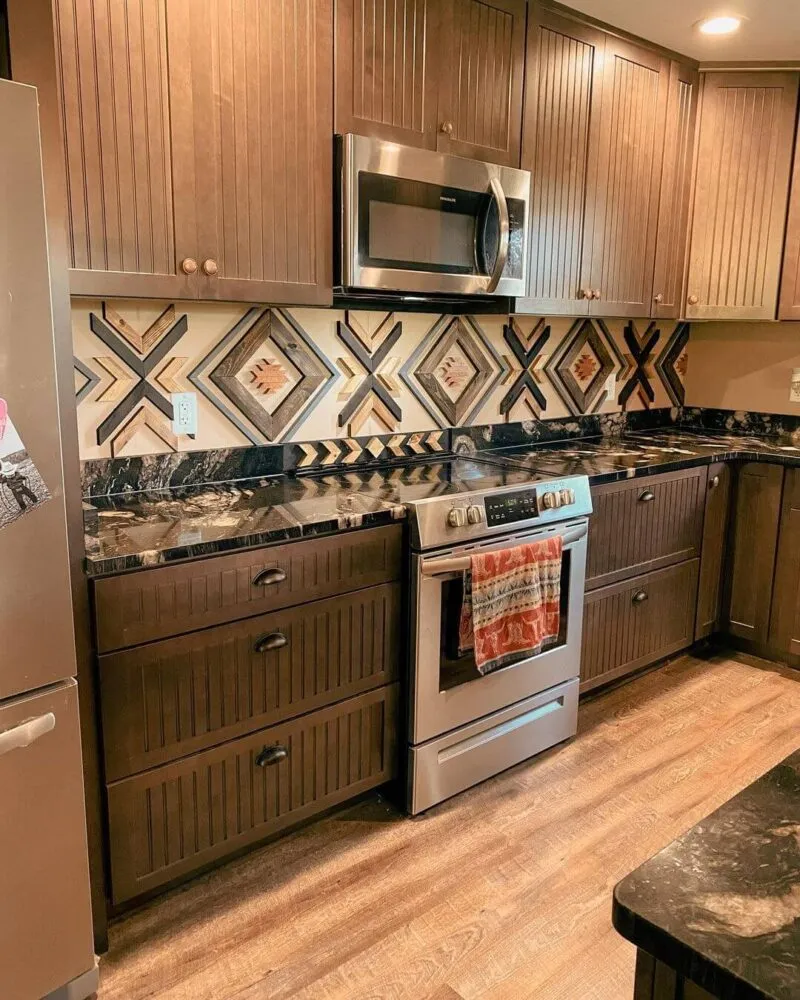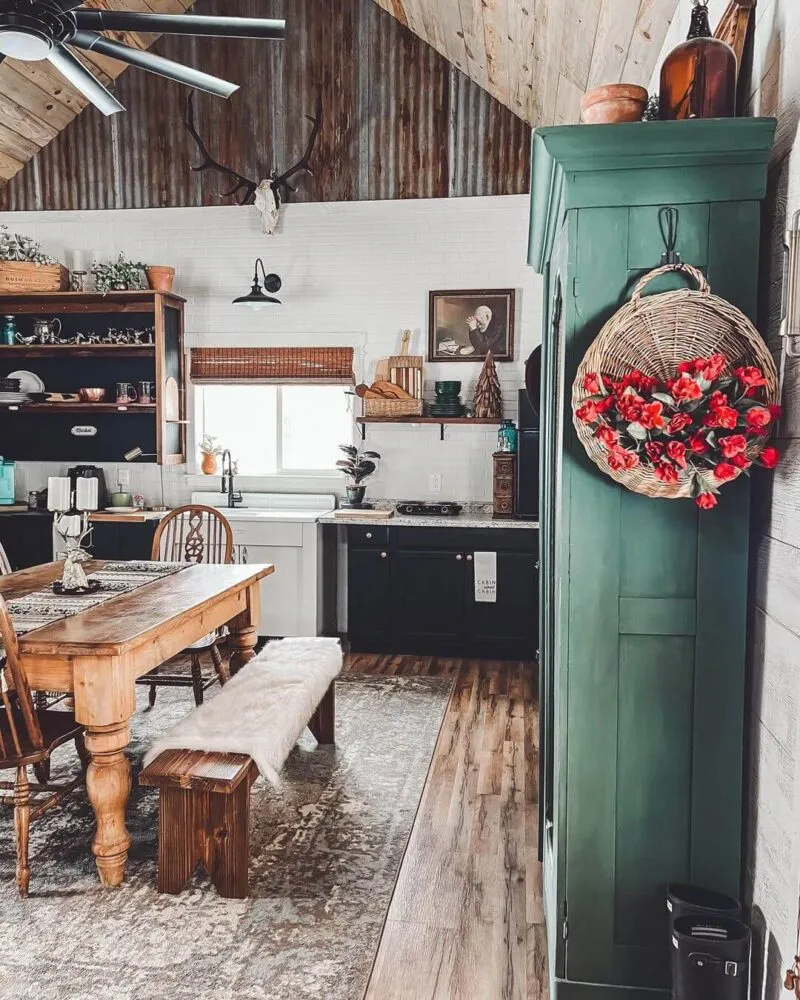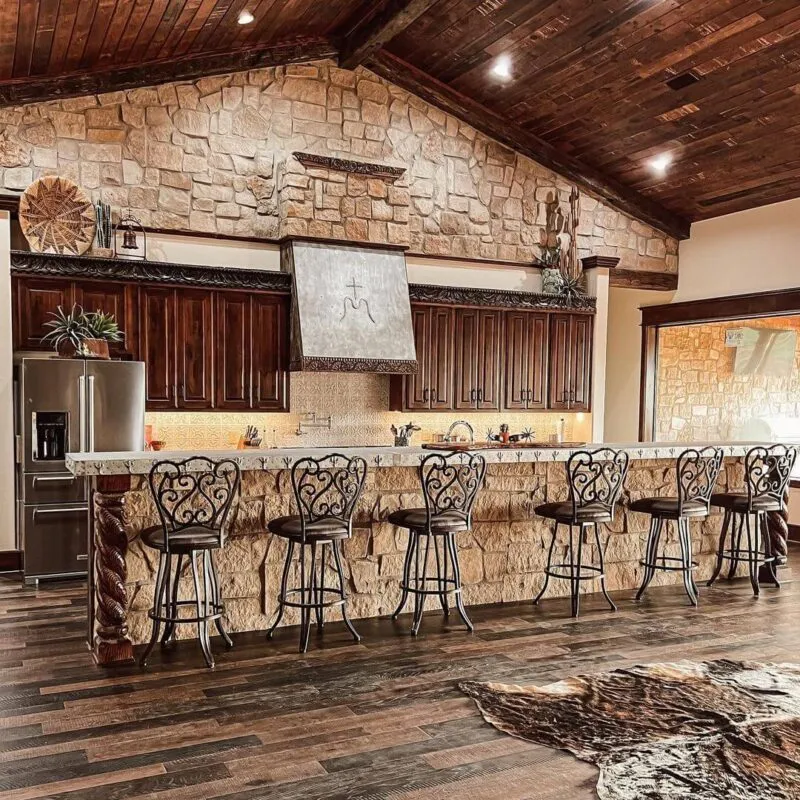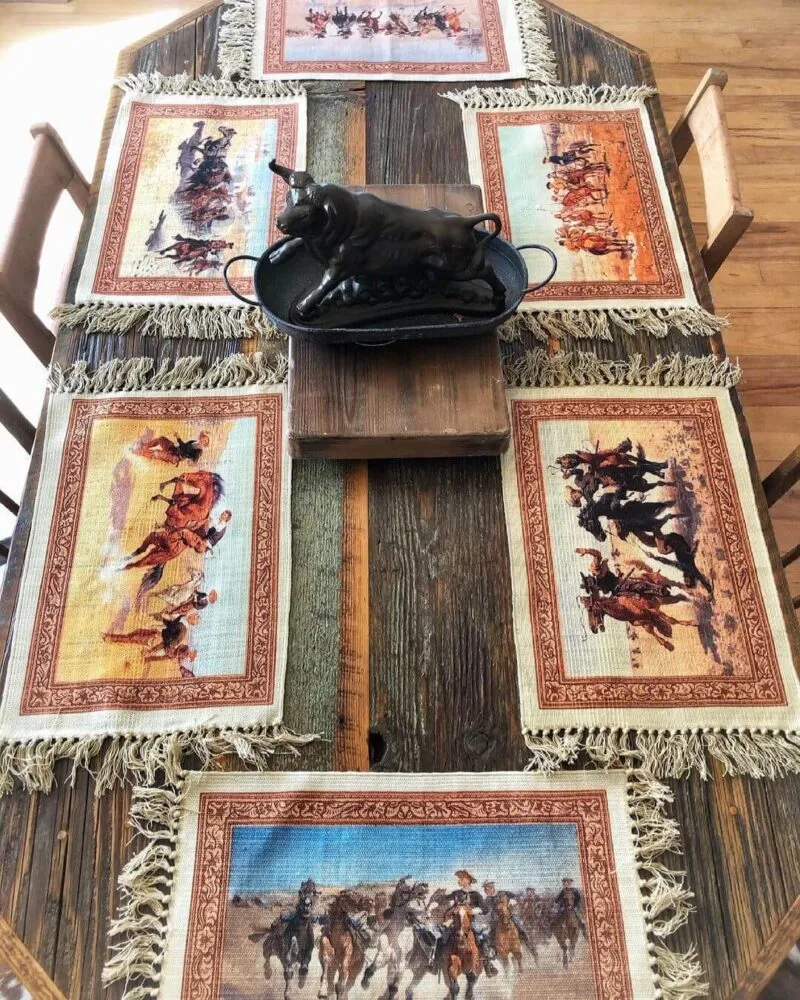Defining Western Kitchen Decor
Western kitchen decor embodies the rugged charm and spirit of the American West. It’s a style that evokes images of wide-open spaces, natural materials, and a sense of rustic elegance. Unlike the often-minimalist approach of contemporary design, or the sometimes-overly-polished look of modern kitchens, Western decor embraces warmth, texture, and a connection to the earth. It’s about creating a welcoming space that feels both comfortable and stylish, reflecting a love for history, craftsmanship, and the outdoors. This style is about using natural elements in a way that feels authentic and lived-in, avoiding a sense of pretense.
Key Elements of Western Style
Several key elements define a Western kitchen. First and foremost, the use of natural materials is crucial. Think wood, stone, and leather. These materials provide the foundation for the aesthetic, creating a sense of depth and texture. The color palette often draws inspiration from the landscapes of the West, incorporating earthy tones like browns, beiges, reds, and greens. Rustic finishes, such as distressed wood or hand-forged metal, are also important. These finishes add to the authentic, weathered appearance, which is a cornerstone of the style. Other key features are often the presence of iconic imagery, such as horseshoes, cowboy hats, and cacti, either as decorative items or incorporated into the design elements.
Color Palette for Western Kitchens

The color palette in a Western kitchen is all about embracing the hues of the desert and the plains. Think of the rich browns of leather, the warm beiges of sandstone, the deep reds of sunset, and the various greens of cacti and sagebrush. These colors create a sense of warmth and invitation. It’s common to see these earthy tones used throughout the kitchen, from the cabinetry and countertops to the walls and textiles. Accent colors can be added through decorative items such as turquoise, or even the use of a rich burgundy or a deep forest green. The key is to create a balance that feels both harmonious and evocative of the natural world. Avoid bright, jarring colors, as the goal is to create a space that feels grounded and relaxing.
Materials that Define Western Style
The materials used in a Western kitchen are vital to its overall aesthetic. Wood is perhaps the most important, with a preference for rough-hewn, reclaimed, or distressed varieties. Consider using wooden cabinetry, open shelving, or even exposed beams. Stone, whether natural or manufactured, adds a sense of solidity and connection to the earth. Stone countertops or backsplashes can be an effective way to introduce this material. Leather is another key element, appearing in bar stools, chairs, or even as accents on cabinet doors. Metal, particularly iron, is also a popular choice, used in lighting fixtures, cabinet hardware, or decorative elements. The goal is to create a mix of textures and materials that feel authentic and inviting, creating a space that has character and charm.
Furniture and Fixtures for Western Kitchens
Choosing the right furniture and fixtures is crucial in creating a Western kitchen. Look for pieces that have a rustic or handcrafted feel. Consider a large, solid wood kitchen table that can serve as the focal point of the space. Bar stools with leather seats and metal frames are a classic choice. For fixtures, opt for those with a vintage or industrial-inspired aesthetic. Think of bronze, copper, or iron finishes. These materials evoke a sense of history and authenticity. The goal is to select pieces that are both functional and stylish, adding to the overall warmth and character of the kitchen. Avoid overly sleek or modern designs, as they can clash with the Western style’s rugged charm.
Essential Decor Items for a Western Kitchen

Decorative items are important for adding personality and character to a Western kitchen. Consider incorporating items that reflect the Western theme. These could be anything from vintage signage and branding irons to framed photographs or paintings of the Western landscape. Woven rugs or runners can add warmth and texture to the floor, while pottery and ceramics can be used to display utensils or as decorative pieces on open shelves. Adding touches of turquoise through pottery, artwork, or textiles can also create a strong visual impact. The key is to choose items that you love and that contribute to the overall aesthetic of the space, creating a kitchen that feels like a true reflection of your personal style.
Lighting in a Western Kitchen
Lighting is a crucial aspect of any kitchen design, and even more so in a Western-style space. The goal is to create a warm and inviting atmosphere. Choose lighting fixtures that complement the other elements of the design. Rustic chandeliers with wrought-iron details, pendant lights with metal shades, or even sconces with a vintage feel can all work well. The use of warm-toned light bulbs can enhance the cozy feel of the space. Layer the lighting to create a dynamic environment. Include ambient lighting, task lighting, and accent lighting. This combination ensures the kitchen is functional and visually appealing. Avoid harsh overhead lights and instead, prioritize softer, more diffused sources of illumination that evoke a sense of comfort and relaxation.
Incorporating Textiles
Textiles play a crucial role in adding warmth, texture, and a sense of comfort to a Western kitchen. Consider incorporating woven rugs or runners with Southwestern patterns or geometric designs. These can be placed in front of the sink or stove. Throw pillows with leather or suede details can add a touch of luxury to the space. Window treatments made of natural fabrics such as linen or burlap can soften the light and add a rustic touch. Dish towels, table runners, or even seat cushions in complementary colors and patterns can tie the room together. The key is to choose textiles that are durable, functional, and visually appealing, adding to the overall cozy and inviting atmosphere.
Tips for Avoiding Farmhouse in Western Decor

While both Western and farmhouse styles share a love for rustic elements, it’s important to differentiate between the two. To avoid a farmhouse look, focus on the details. Avoid overly distressed white or cream-colored cabinetry, shiplap walls, and overly floral patterns. Instead, prioritize darker wood tones, stone elements, and strong geometric patterns. Choose more rugged and raw textures instead of overly polished or delicate finishes. Embrace elements that evoke the vastness of the Western landscape rather than the cozy charm of a farmhouse. By focusing on natural materials and incorporating iconic Western imagery, you can create a unique and authentic Western kitchen that stands apart from the farmhouse style.
Creating a Cohesive Western Kitchen Design
The key to creating a cohesive Western kitchen design is to balance the elements. Consider the overall flow and functionality of the space. Before you start, decide on the style that will be most evident in the kitchen. From there, make sure each element complements the others. Choose a consistent color palette and stick to it. Be mindful of the materials and textures used throughout the kitchen. Don’t be afraid to mix and match different styles and periods, but always ensure that the various elements work together harmoniously. By paying attention to detail and maintaining a cohesive vision, you can create a Western kitchen that is both stylish and inviting, reflecting the spirit of the American West.
